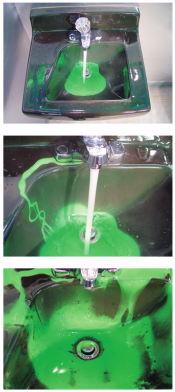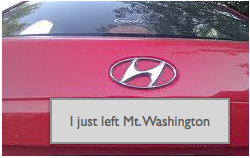At our last meeting, we started talking about heads-up displays (HUD) and augmented reality (AR). Since Google’s video about their Project Glass had just come out, that became the focus of our discussion for so long that when we had finished brainstorming, we had to call it quits for the day. The discussion centered around input methods, information displayed, user interfaces (who will be interfacing with what through AR: people, people and objects, people and machines, people and displayed digital information or metadata…) Below are the ideas we generated, and next week we’ll start by turning the ghost racing idea into a product brief.
- AR glasses as a platform for sketching and CAD – uses hand tracking as an input device
- Recording and cuing stories or jokes by gestures
- Historical overlays on cities for pedestrian tourists
- Parkour video game
- Modeling data (such as wind density in a city square, or light) as interactive sculptures
- “Real life” ghost racing
- Tutorials or how-to information encoded in objects (will this be death of design for usability?)
- Sculpting through hand following and haptic feedback
- Surveying or dimensioning in the world – an engineer could apply a know shape and size object, like a Post-it note, to a building, and AR glasses could calibrate dimensions using the relative size and skew of the reference object
- Security tracking and avoidance – AR glasses that visualize for the wearing the blind spots of security cameras and mirrors









